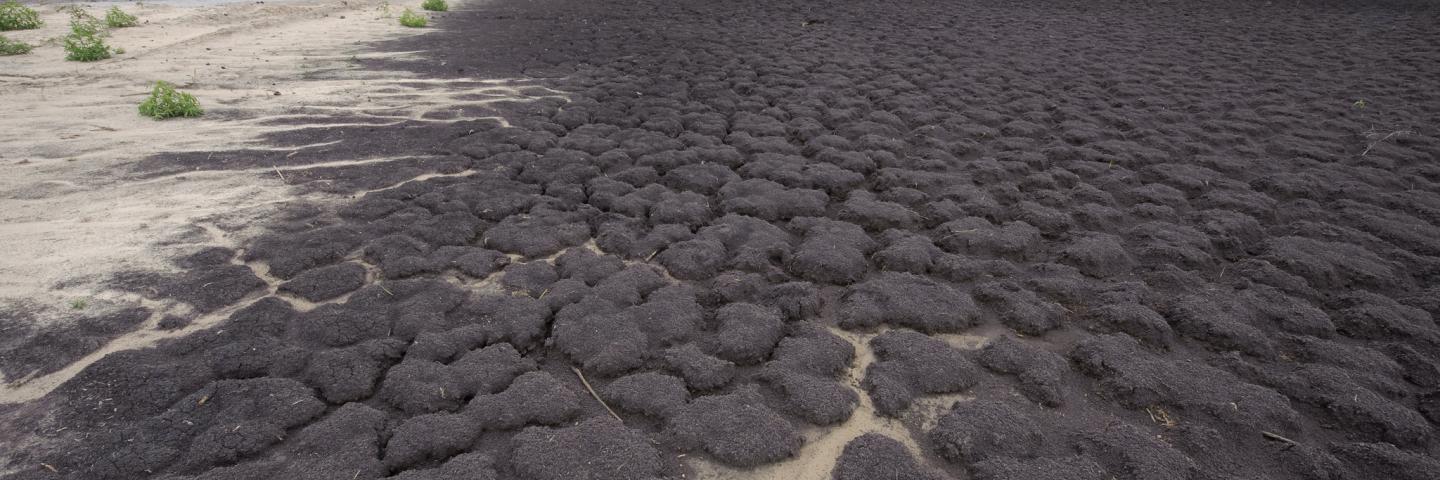USDA to Invest $41.8 Million in Conservation Assistance for Producers in Drought-Impacted States

In response to historic drought conditions, the U.S. Department of Agriculture (USDA) is offering $41.8 million through the Environmental Quality Incentives Program (EQIP) to help agricultural producers in Arizona, California, Colorado and Oregon alleviate the immediate impacts of drought and other
WASHINGTON, June 10, 2021 – In response to historic drought conditions, the U.S. Department of Agriculture (USDA) is offering $41.8 million through the Environmental Quality Incentives Program (EQIP) to help agricultural producers in Arizona, California, Colorado and Oregon alleviate the immediate impacts of drought and other natural resource challenges on working lands. USDA’s Natural Resources Conservation Service (NRCS) will make available this funding through Conservation Incentive Contracts, a new option available through EQIP. Signup for this targeted funding begins today, and NRCS will accept applications through July 12, 2021.
Through EQIP, NRCS offers conservation practices that help producers recover from the impacts of drought as well as build resiliency. These practices provide other key benefits, including mitigating impacts from climate change as well as preventing and recovering from wildfire.
“As ongoing drought conditions in the West continue to worsen, we knew we needed to increase our support to farmers and ranchers in dealing with drought and prepare for the challenges of tomorrow,” said NRCS Chief Terry Cosby. “EQIP is our flagship conservation program, and with the expanded benefits the Conservation Incentive Contracts offer, it enables producers to deploy conservation activities that strengthen existing efforts on their land to help during times of drought. Additionally, by targeting this program in several states, we can make any needed adjustments before rolling out Conservation Incentive Contracts nationwide in fiscal year 2022.”
Conservation Incentive Contracts
While Conservation Incentive Contracts are available in select states in fiscal year 2021, NRCS will roll out nationwide in fiscal year 2022, using this pilot to refine implementation of this new option.
The 2018 Farm Bill created the new Conservation Incentive Contracts option to address high-priority conservation and natural resources concerns, including drought. Through 5- to 10-year contracts, producers manage, maintain and address important natural resource concerns and build on existing conservation efforts.
Conservation Incentive Contracts offer conservation activities that producers implement to address resource concerns.
NRCS will set aside $11.8 million directly for drought-related practices. Practices include forest management plans, tree/shrub establishment, brush management, prescribed grazing, pasture and hay planting, wildlife habitat, livestock watering systems and cover crops.
How to Apply
To learn more about Conservation Incentive Contracts, visit the EQIP webpage. Producers in Arizona, California, Colorado and Oregon who are interested in this targeted funding should apply by July 12, 2021 by contacting their local USDA Service Center.
While USDA offices may be closed to visitors because of the pandemic, Service Center staff continue to work with agricultural producers via phone, email, and other digital tools. To conduct business, please contact your local USDA Service Center. Contact information can be found at farmers.gov/service-locator.
Other Drought Assistance for Producers
EQIP is one of many USDA disaster assistance programs available to help producers recover from drought.
For livestock producers, the Livestock Forage Disaster Program offers payments to eligible livestock owners and contract growers who also produce forage crops for grazing and suffered losses during the normal grazing period for the county. Additionally, the Emergency Assistance for Livestock, Honeybees, and Farm-Raised Fish Program provides eligible producers with compensation for feed losses not covered by LFP as well as assistance with water hauling expenses.
For specialty crop producers, the Tree Assistance Program offers eligible orchardists, vineyardists and nursery tree growers cost-share assistance to replant or rehabilitate eligible trees, bushes or vines. The Noninsured Crop Disaster Assistance Program offers financial assistance to eligible producers of non-insurable crops when low yields, loss of inventory, or prevented planting occur due to natural disasters, including qualifying drought.
For forest landowners, the Emergency Forest Restoration Program can assist eligible landowners and forest stewards with financial and technical assistance to restore damaged farmland or forests.
These are some of the programs available through USDA’s Farm Service Agency (FSA). A full list can be found on the Disaster Assistance Discovery Tool or Disaster-at-a-Glance fact sheet. For FSA and NRCS programs, they should contact their local USDA Service Center.
Additionally, producers who have risk protection through Federal Crop Insurance should timely report crop damage or loss to their crop insurance agent.
More Information
Additional NRCS programs include the Emergency Watershed Protection (EWP) Program, which provides technical and financial assistance through local government sponsors for addressing imminent threat to life (human) and/or property caused by drought. Sponsors must submit a formal request (via mail or email) to the state conservationist and an emergency declaration must be issued related to the drought based on the merit of the cases received within 60 days of the natural disaster occurrence or 60 days from the date when access to the sites is possible.
USDA is transforming America’s food system with a greater focus on more resilient local and regional food production, fairer markets for all producers, ensuring access to healthy and nutritious food in all communities, building new markets and streams of income for farmers and producers using climate smart food and forestry practices, making historic investments in infrastructure and clean energy capabilities in rural America, and committing to equity across the Department by removing systemic barriers and building a workforce more representative of America. To learn more, visit www.usda.gov.

